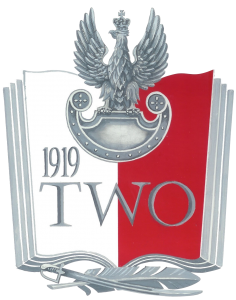COVERT ACTION VS AKIWNYJE MIEOPRIJATIJA. RYWALIZACJA CIA I KGB W ASPEKCIE TAJNYCH OPERACJI WYWIADU W OKRESIE ZIMNEJ WOJNY
Abstrakt
W artykule przestawiono zmagania amerykańskiej Centralnej Agencji Wywiadowczej (CIA) i radzieckiego Komitet Bezpieczeństwa Państwowego (KGB) w aspekcie pozainformacyjnych operacji wywiadowczych w czasie zimnej wojny. Działanie te określane w Stanach Zjednoczonych jako „covert action”, a w Związku Radzieckim jako „akiwnyje mieoprijatija” polegały m.in. na wywieraniu wpływu na sytuację polityczną, ekonomiczną lub militarną innych państw, np. poprzez inspirowanie zamachów stanu, akcje paramilitarne, zabójstwa, szkolenie i finansowanie zbrojnych oddziałów, czy też stosowanie „czarnej” propagandy. Tajne operacje były skutecznym narzędziem w rękach CIA i KGA, mieszczącym się pomiędzy tradycyjną dyplomacją a otwartym konfliktem zbrojnym, choć jednocześnie były niezgodne z prawem międzynarodowym. Porównanie metod działania obu organizacji wywiadowczych w okresie zimnej wojny wskazuje, że stosowały one dość podobne środki w operacjach zagranicznych, natomiast istotnie różniły się, co do realizacji tajnych operacji w polityce wewnętrznej państwa.
Bibliografia
Anderson E.E., The security dilemma and Covert Action: The Truman years, „International Journal of Intelligence and CounterIntelligence” 1998, vol. 11, no. 4.
Andrew Ch., Mitrochin W., Archiwum Mitrochina II: KGB i świat, Poznań 2018.
Andrew Ch., O. Gordijewski, KGB, Warszawa 1997.
Andrew Ch., Tylko dla oczu prezydenta, Warszawa 1998.
Boesche R., Kautilya’s Arthasastra on War and Diplomacy in Ancient India, „The Journal of Military History” 2003, vol. 67, no. 1.
Brantly A.F., Cyber Actions by State Actors: Motivation and Utility, „International Journal of Intelligence and CounterIntelligence” 2014, vol. 27, no. 3, s. 482.
Currie J.T., Iran‐contra and congressional oversight of the CIA, „International Journal of Intelligence and CounterIntelligence” 1998, vol. 11, no. 2.
Darczewska J., Żochowski P., Środki aktywne. Rosyjski towar eksportowy, „Punkt Widzenia” 2017, nr 64.
Daugherty W.J., Executive Secrets: Covert Action and the Presidency, Lexington 2004.
Falk R.A., CIA Covert Action and International Law, „Society” 1975, vol. 12, no. 3.
Gleijeses P., The CIA’s paramilitary operations during the cold war: an assessment, „Cold War History” 2016, vol. 16, no 3.
Inside the KGB, An interview with retired KGB Maj. Gen. Oleg Kalugin, https://web.archive.org/web/20070627183623/http://www3.cnn.com/SPECIALS/cold.war/episodes/21/interviews/kalugin/ [dostęp: 15.05.2021].
Jensen III C.J., McElreath D.H., Graves M., Introduction to intelligence studies, New York–London 2018.
Johnson L.K., On Drawing Covert a Bright Line Operations, „The American Journal of International Law” 1992, vol. 86, no. 2.
Kamiński M.A., Ewolucja wywiadu jako instytucji państwa, Warszawa 2021.
Kamiński M.A., Intelligence Sources in the Process of Collection of Information by the U.S. Intelligence Community, „Security Dimensions”, 2019, vol. 32, DOI: 10.5604/01.3001.0014.0988.
Kamiński M.A., Kontrola tajnych operacji wywiadu przez Kongres Stanów Zjednoczonych Ameryki, „Przegląd Sejmowy”, 2020, t. 160, nr 5, DOI: 10.35467/sdq/121974.
Kamiński M.A., Operation “Olympics Games." Cyber-sabotage, as a tool of American intelligence aimed to counteract the development of Iran's nuclear program., „Security and Defence Quarterly”, 2020, vol. 29, no 2, DOI: 10.35467/sdq/121974.
Kautilya, The Arthasastra, t. 2, tł. na angielski R.P. Kangle, Delhi 2014.
Korkuć M., Wybory 1947 – mit założycielski komunizmu, http://www.polska1918-89.pl/pdf/wybory-1947--mit-zalozycielski-komunizmu,5603.pdf [dostęp: 15.05.2021].
Kretzmer D., Targeted Killing of Suspected Terrorists: Extra-Judicial Executions or Legitimate Means of Defence?, „The European Journal of International Law” 2005, vol. 16, no. 2.
Krzykowski P.,, Rosyjska myśl strategiczna, „Świat Idei i Polityki”, 2021, t. XX, nr 2.
Meyer J.T., Supervising The Pentagon: Covert Action and Traditional Military Activities in the War on Terror, „Administrative Law Review” 2016, vol. 59, no. 2.
Minkina M., Wywiad w państwie współczesnym, Warszawa 2011.
O’Brien K.A., Covert Action: The ‘Quiet Option’ in International Statecraft, w: Strategic Intelligence t. 3, Covert Action: Behind The Veils Of Secret Foreign Policy, Johnson, Loch K. (ed), Westport, Connecticut, London 2007.
Pacek B., Wojna hybrydowa na Ukrainie, Warszawa 2018.
Richelson J.T., The U.S. Intelligence Community, New York–London 2018.
Sanchez E.J., Intelligence Collection, Covert Operations, and International Law, „Intelligencer. Journal of U.S. Intelligence Studies” 2017, vol. 23, no. 2.
Sheldon R.M., The ancient imperative: clandestine operations and covert action, „International Journal of Intelligence and CounterIntelligence” 1997, vol. 10, no. 3.
Stempel J.D., Covert Action and Diplomacy, w: Strategic Intelligence t. 3, Covert Action: Behind The Veils Of Secret Foreign Policy, Johnson, Loch K. (ed), Westport, Connecticut, London 2007.
Turner M.A., Covert Action: An Appraisal of the Effects of Secret Propaganda, w: Strategic Intelligence t. 3, Covert Action: Behind The Veils Of Secret Foreign Policy, Johnson, Loch K. (ed), Westport, Connecticut, London 2007.
Copyright (c) 2022 Mariusz Antoni Kamiński

Utwór dostępny jest na licencji Creative Commons Uznanie autorstwa – Na tych samych warunkach 4.0 Miedzynarodowe.








